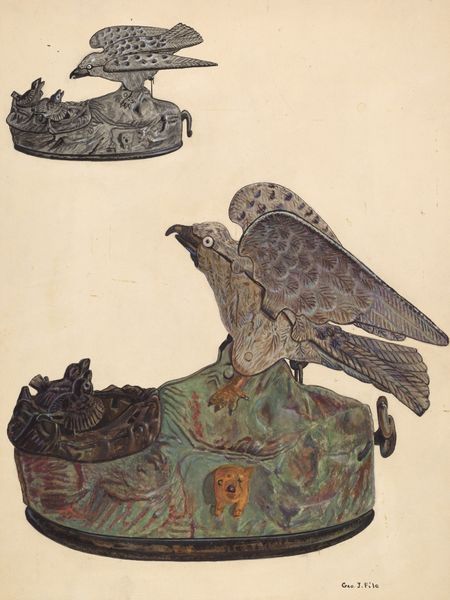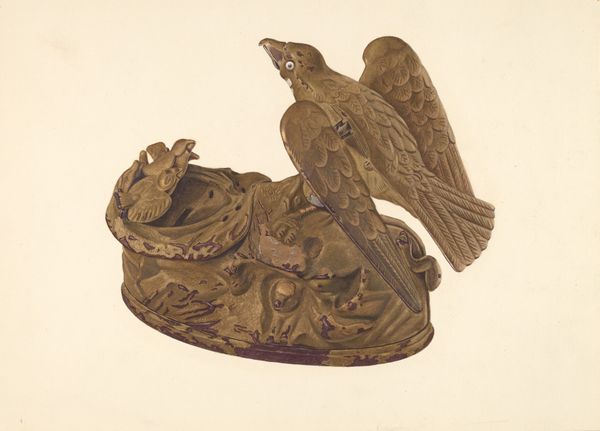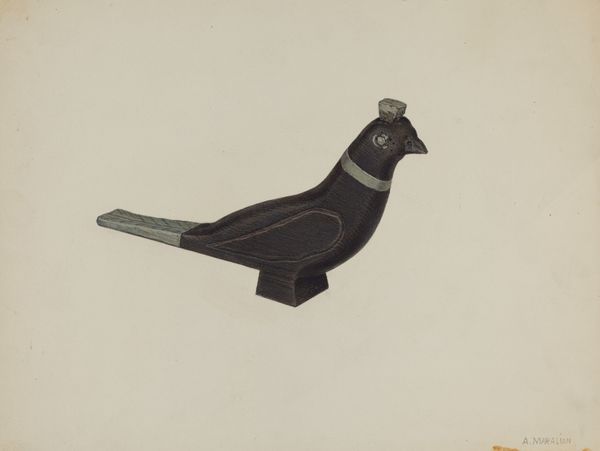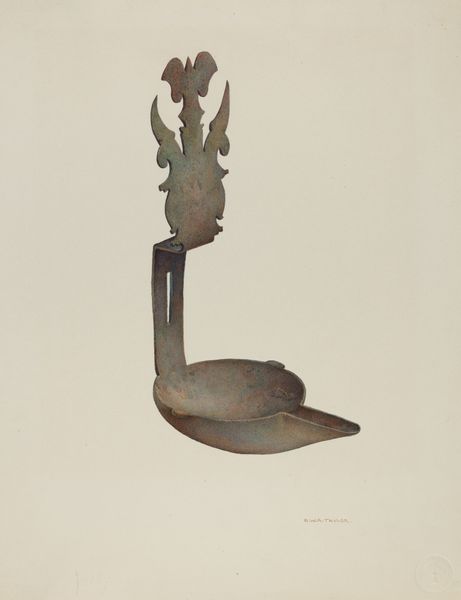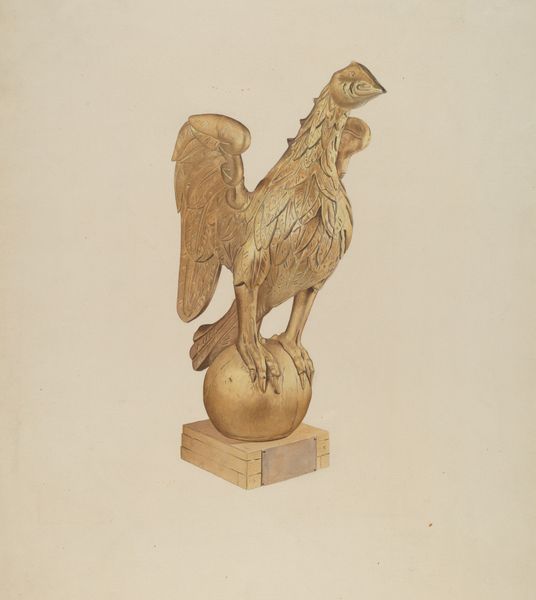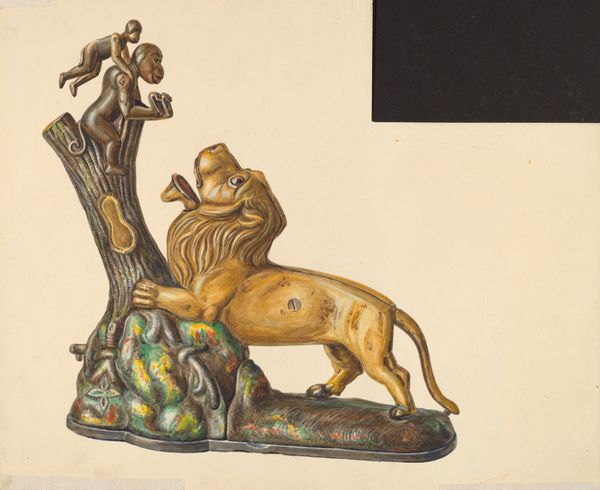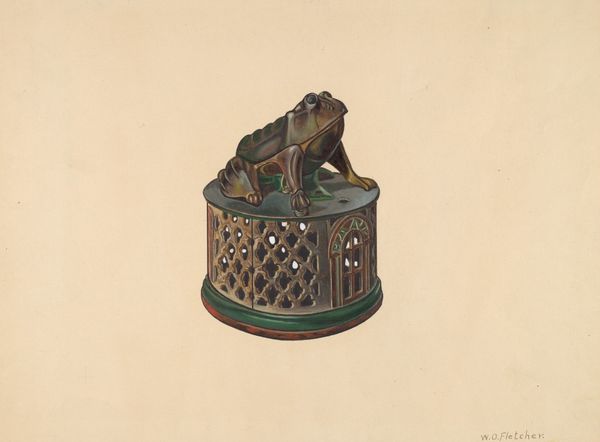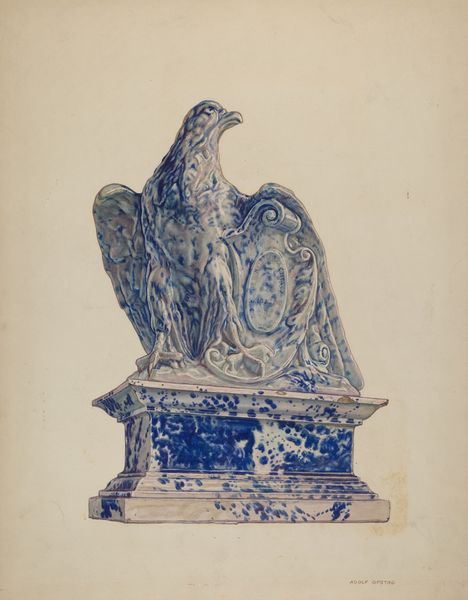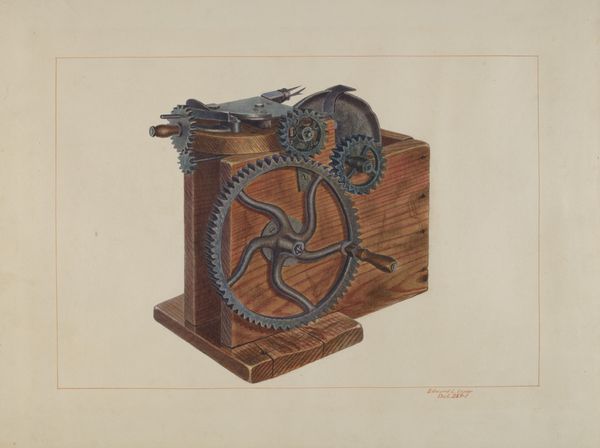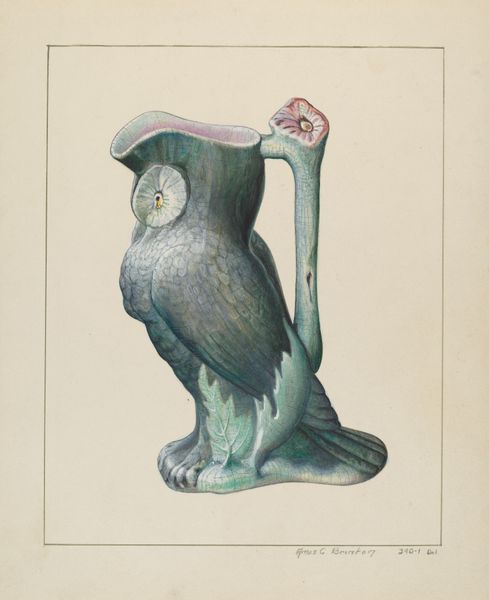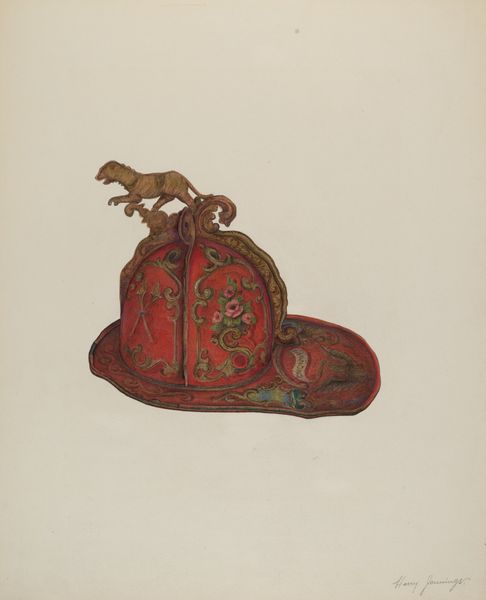
drawing, watercolor
#
drawing
#
water colours
#
watercolor
Dimensions: overall: 30.5 x 40.7 cm (12 x 16 in.)
Copyright: National Gallery of Art: CC0 1.0
Curator: This watercolor artwork, dating back to about 1940, presents a rendering of a toy bank, titled "Toy Bank: Eagle" by William High. It really speaks to its historical context. Editor: The subtle hues immediately catch my eye—a muted palette that, rather than appearing childish, evokes a contemplative mood. I’m particularly drawn to the gradations of color defining the eagle’s form. Curator: Yes, there’s something decidedly unsettling about representing such nationalistic imagery in this gentle watercolor, intended to collect coins and inculcate certain values into children. The artist chose a form laden with American symbolism – the eagle, of course – to then quite literally have its insides filled with capital. Editor: Indeed. Note the way High plays with light and shadow, creating depth and volume. The details are meticulously rendered, and observe the composition of shapes and forms, as the textures add to the tactile nature of the work. There is something clean and precise that underscores the work’s impact. Curator: Thinking about this design in relation to American childhood, I'm immediately reminded that financial stability was by no means a universally experienced reality. I mean, the implied promise that capitalism delivers on dreams through diligent saving becomes questionable when considering racialized income inequalities in this period. Editor: That tension between idealized form and critical reality makes it intriguing. The use of line and color balance the visual composition, making it formally compelling and accessible, in this medium. Curator: Placing the children at the center, this piece provides rich insights into how children internalize ideas and systems. It really causes me to ask, whose values are embedded in the messages toys give to them? Editor: I see your point and appreciate your attention to it. But stepping back, it remains impressive how High transformed an everyday object into a sophisticated study of form and color, giving the work its enduring aesthetic quality.
Comments
No comments
Be the first to comment and join the conversation on the ultimate creative platform.
